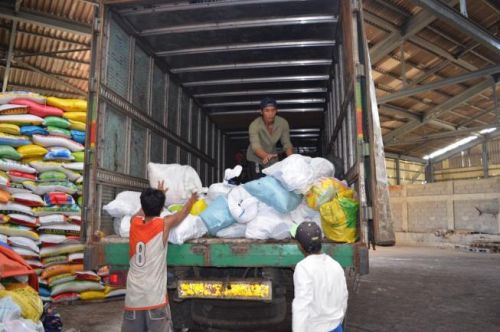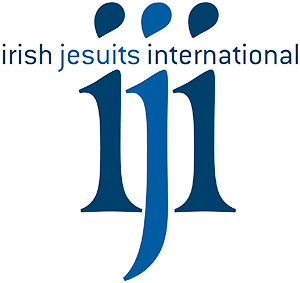

Find below extracts from the latest update sent to us from Simbahang Lingkod ng Bayan (SLB), the social justice arm of the Philippines Jesuit Province, who has been organising emergency relief in the aftermath of Typhoon Haiyan.
For an account of the Jesuit Relief Operation’s visit to Culion Island click here. For updates on the ongoing relief operation click here.
Emergency Relief Summary
- SLB is doing the relief activities very efficiently and reaching a large number of families. In the last report we reach the final figure of 17,000 families (14,000 at the time of the visit, plus 2,800 families in the deployment made during our visit)
- Emergency work has focused on Samar – Leyte and Culion, the areas most affected by the Typhoon . We can say that SLB is attending to the most affected populations
- Very positive work done in collaboration with other actors and institutions
- In Culion emergency work is based on collaboration with the Parish and the Jesuit presence. In Leyte – Samar , work is coordinated through various church structures
- SLB relief operation is scheduled for a month and a half duration. I consider that this distribution of goods and other non-foods items should end, and instead we should proceed to the rehabilitative actions
- Other actors have already started other emergency strategies: cash for work and food for work
- The volunteers mobilization for emergency work has been very positive, but at all times they have had professional support
- The deployment of kits has been very well managed. The basic pack is oriented for a family of 5 members for 3/ 5 days and contains 10 kg of rice, hygienic kit, biscuits, 10 cans of food and three cubes.
Visit to Isabel
“One of the objectives to visit Isabel (in Leyte Island) is to see a large distribution of goods. We arrived from Manila to Cebu by plane and after that we continue by boat until Ormoc and we must continue by car until Isabel. We can see the heavy effects of the supertyphoon in this area.
“In Isabel, we are placed in a factory that has opened its doors to welcome different NGOs working in the area. And from there we headed to the port (due to the closure of the port of Tacloban , Isabel is still the basis for the arrival of emergency goods), where we are waiting for the arrival of the boat with the goods to be distributed . In total there are 2,800 kits to be distributed in different locations of the island: Merida, Baybay, Naungan, Metagob, Kananga, Marabut, Lawaan, Balangiga, Giporlos, Qiomapondan, Salcedo, Guiuan and Hernani. The distribution will be made with 8 trucks ready for work. I remain very surprised about the logistics capacity and coordination with other actors. In this case SLB is working with a private company and also get the help of the Philippine Army.
“In these actions, SLB works with volunteers from the area, which helps a lot to good coordination and a very good relationship with the local population.
“Finally the boat arrives and begins unloading. Because it is a task that will last a long time, we decided not to wait to the deployment and continue the visit to Tacloban and Eastern Samar.”
Visit to Tacloban and Eastern Samar
“We continue to visit the area most affected by the typhoon, Tacloban and some cities in Eastern Samar.
“It’s amazing to see the effects that the typhoon has made in the towns and in nature. All the way, we see how everything has been destroyed. In Tacloban the situation is dramatic, as much of the city has been destroyed by Typhoon.
“During the visit, we met with some of the parishes from which the distribution is being made real emergency. The local church has played an important role accompanying people affected by the typhoon.
We also have the opportunity to visit some families.
“It’s very important the resilience of the affected population and as quickly been put to work in rehabilitation. Now it looks like the strategy of many NGOs is changing from distribution of goods to programs of “cash for work” and “food for work”.”
Economic Effect of the Typhoon
It’s very important to take account the situation of the fisheries sector. Preliminary assessments indicate that small-scale fishers were the worst affected in terms of livelihoods. The typhoon destroyed or damaged tens of thousands of small boats and fishing gear, and flattened crucial infrastructure including jetties and landing ports, onshore ice and cold storage facilities, boat repair and maintenance facilities, processing factories and markets. Economic losses to the sector are still being quantified, but the worst hit regions are major producers in both aquaculture and fisheries. Boats need to be rebuilt and replaced, but this needs to be done in a coordinated manner to ensure that existing fishing capacity is not exceeded. Replacement fishing gear should be selective not to catch all fishes, legal in their design, non-destructive and environmentally friendly.
To donate to the ongoing operation in the Philippines, click the ‘Donate Online’ button to the right of this page. To send a contribution to our office, you can write a cheque payable to ‘Jesuit Missions’, or by dropping into our office. All donations will be forwarded to the Jesuit Coordinator of the Disaster Response Team in the Philippines. For further information, email Winnie at [email protected] or ring 01-8366509

